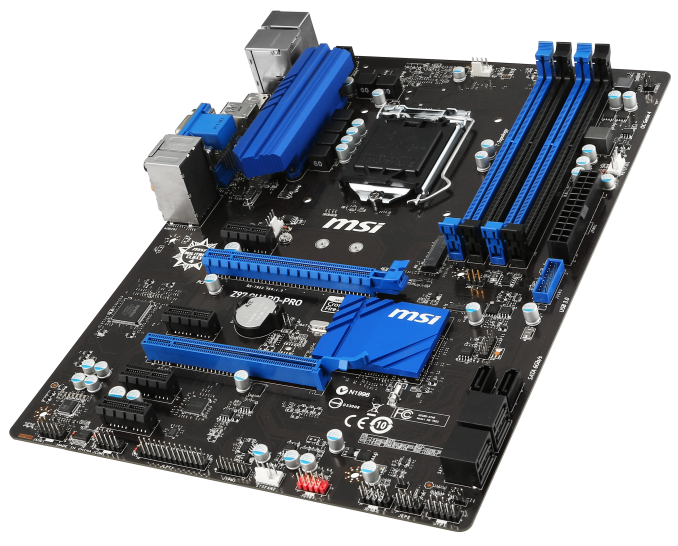MSI Z97 Guard-Pro Review: Entry Level Z97 at $110
by Ian Cutress on August 20, 2014 6:00 AM EST- Posted in
- Motherboards
- Intel
- MSI
- Z97
MSI Z97 Guard-Pro Conclusion
The motherboard industry is one of the most mature PC markets. We are now at a point where the main motherboard manufacturers have been in the market for long enough to understand their customer base and understand their own designs. As a result, even the most basic motherboard works as advertised, and issues seem few and far between. One might argue that reviews of these products end up merely like a checklist to see if everything works, because at the end of the day the reason why some motherboards are more expensive comes down to features and engineering. With a limited cost motherboard, there is controller comparison or functionality discussion – we typically end up with most of the software and the BIOS at the high end anyway.
The MSI Z97-Guard Pro does at least come across with a goal: to integrate into a system as part of a cheaper single GPU and Pentium G3258 build, or to form the base of a PCIe workhorse. That latter point is expressed on the art of the box, and indicates that with the right adaptors this motherboard can support six PCIe devices, particularly for Bitcoin mining. This comes from a PCIe 2.0 x4 and four PCIe 2.0 x1 slots, which totals all eight of the PCIe 2.0 lanes from the chipset. For multi-GPU users, there is no SLI here because of the second full length PCIe slot only being four lanes, but Crossfire (with limited bandwidth) is supported.
MSI also equips this board with six SATA 6 Gbps and six USB 3.0 ports, both from the chipset, as well as an M.2 x2 slot. When using the M.2, two of the PCIe 2.0 x1 slots and two of the SATA ports are disabled due to onboard switching of bandwidth. Both the audio and the network functionality are provided by Realtek, and the ALC892 ends up being a poor performer. The USB 2.0 and USB 3.0 speed is on par with other Z97 platforms, along with the 12-13 second POST time and 88 microseconds of DPC Latency. Power consumption is low, giving 141W at load in our setup. This makes sense given the lack of extra controllers onboard. The overall CPU performance is in the bottom part of our Z97 testing, which would suggest that the motherboard is best suited for an overclocked system.
The main two points where MSI falters comes down to offering 2.1 volts through the CPU in software and a tendency to lock up in the BIOS if the voltage is too low, not giving enough time to raise the voltage before becoming unresponsive. Overall the MSI Z97 BIOS is still improving for the better with the additions of the XMP button and fan control, which can only ever be a good thing. One might also point out that the lack of HDMI on the rear panel is an oversight, but I imagine that was left out in order to reduce license fee costs and DisplayPort is present to allow for three-monitor setups.
MSI’s biggest leverage is with the G3258 overclocking. The OC Genie will enable a +1.1 GHz overclock at the touch of a button, and our manual overclocking went all the way up to 4.8 GHz with a peak temperature of 80ºC, which is rather impressive for a low cost motherboard.
The MSI Z97-Guard Pro provides a nice base for a low cost Intel PC where Pentium G3258 overclocking combined with single GPU gaming, or non-PCIe bandwidth based compute, are important. For gamers on a budget, press the OC Genie button and pair it up with a USB DAC or PCIe sound card for a good all-around experience.











41 Comments
View All Comments
Etherion - Sunday, February 19, 2017 - link
What a disappointment. Got this MB with a pcie 1to3 switch with the hope of running 8 gpus on it. Sadly it can't handle more than 7. Once I plug in the 8th GPU regardless of configuration it can't boot past bios splash screen. So the cheap asrock h97 anniversary is better.